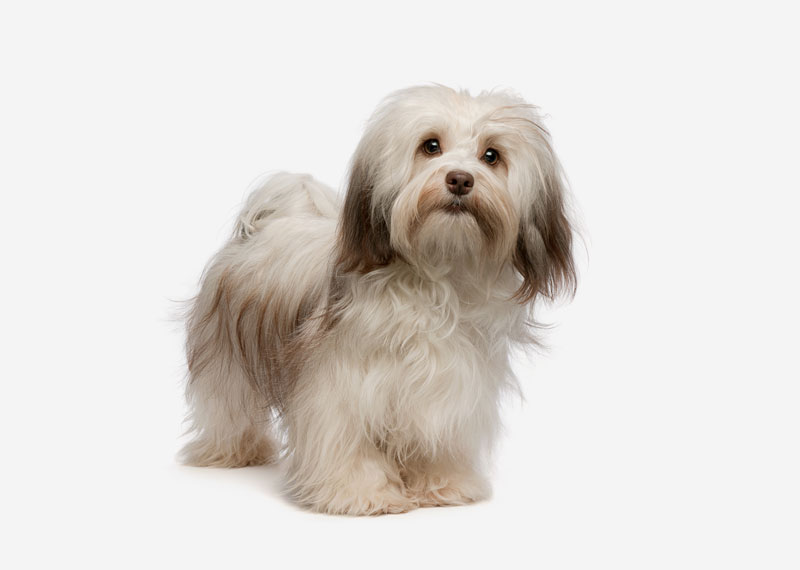The Havanese, a breed of Bichon type, is the national dog of Cuba, developed from the now extinct Blanquito de la Habana ("little white dog of Havana"). The Blanquito descended from the also now extinct Bichon Tenerife. It is believed that the Blanquito was eventually cross-bred with other Bichon types, including the Poodle, to create what is now known as the Havanese. Sometimes referred to as "Havana Silk Dogs", this was originally another name for the Blanquito de la Habana.
The Havanese is small in size and sturdy in structure with a tail carried over its back and ears that drop and fold. The coat is abundant, long, and silky and comes in all colors. The Havanese has a spirited personality and a curious disposition, and is notable for its springy gait, a characteristic that distinguishes the breed from all others. The Havanese is considered an ideal family pet and a true companion dog. They are highly adaptable to almost any environment. Because of their strong social needs, Havanese will not thrive in an environment where they are isolated for several hours each day.
History
The Havanese is a member of the Bichon family of dogs. The progenitors of the breed are believed to have come from Tenerife. Ship manifests from Tenerife bound for Cuba list dogs as passengers brought aboard, and these dogs were most probably the dog of Tenerife. Some believe the entire Bichon family of dogs can be traced back to the Tenerife dog, while others theorize that the origins are in Malta, citing the writings of Aristotle, and other historical evidence of the early presence of such dogs in Malta. Whatever the actual origins of Bichon dogs, these little dogs soon became devoted companions to the Spanish colonists in Cuba and were highly admired by the nobility.
As part of the Cuban Revolution, upper-class Cubans fled to the United States, but few were able to bring their dogs. When American breeders became interested in this rare and charming dog in the 1970s, the US gene pool was only 11 dogs. The Havanese breed was only officially recognised by the American Kennel Club as recent as 1996.
With dedicated breeding, and the acquisition of some new dogs internationally, the Havanese has made a huge comeback and is one of the fastest growing breeds of dogs in the American Kennel Club (AKC). The 2013 American Kennel Club Registration Statistics rank the Havanese as the 25th most popular pure-breed in the United States, a rise in popularity from 28th place in 2012.
Health
Havanese are generally healthy and sturdy with relatively few serious health issues. They typically live 14 to 16 years. Havanese organizations, such as the Havanese Club of America, monitor genetic issues to prevent propagation within the breed.
Havanese suffer primarily from luxating patella, liver disease, heart disease, cataracts and retinal dysplasia. Havanese sometimes tear and may develop brown tear stains, especially noticeable on white or light coats.
The Havanese Club of America developed a system to encourage widespread participation of seven recommended tests for eye disease (CERF), congenital deafness (BAER), patella luxation, cardiac diseases, hip dysplasia, hip joint disorder (Legg-Calve-Perthes), and elbow dysplasia. The Canine Health Information Center (CHIC) program promotes testing and reporting of health test results for the Havanese breed. CHIC is a centralized canine health database jointly sponsored by the AKC Canine Health Foundation (CHF) and the Orthopedic Foundation for Animals (OFA). Testing required for a Havanese to receive a CHIC certificate includes OFA BAER, OFA Hips, OFA Patellas, and annual CERF exams. This provides an outstanding research tool for performing searches on individual dogs and also links health testing results of the dog's related pedigree information (parent, offspring, and sibling), when those related dogs have been health tested.




